
- •Solar radiation extinction in the atmosphere
- •When passing through the atmosphere SR undergoes significant changes
- •SR absorption
- •Ozone (O3) absorbtion
- •Oxygen
- •http://en.wikipedia.org/wiki/File:Atmospheric_Transmission.png
- •Water vapor transmission function
- •SR diffusion in the atmosphere
- •Molecular scattering or Rayleigh scattering
- •John William Strutt, third Baron Rayleigh
- •Rayleigh scattering
- •http://en.wikipedia.org/wiki/File:Rayleigh_sunlight_scattering
- •Raman scattering
- •Raman scattering
- •Molecular scattering (Continuation)
- •Multiple scattering
- •Physical properties of the scattering fields
- •Aerosol scattering
- •Gustav Mie, German physicist
- •The volume coefficient of extinction for larger
- •If many particle of this size are present in the atmosphere the sky
- •Scatter indicatrix is a vectoral diagram depicting dependence of scattered radiation on direction.
- •Simultaneous molecular and aerosol scattering
- •Optical depth of the atmosphere
- •What is the type of scattering below?
- •Which type of scattering is presented?
- •Beijing’s sky

Solar radiation extinction in the atmosphere
Lecture 3
Lecture 3 |
1 |

When passing through the atmosphere SR undergoes significant changes


 Incoming SR
Incoming SR
Absorbed part of SR
Diffused part of SR
Lecture 3 |
2 |
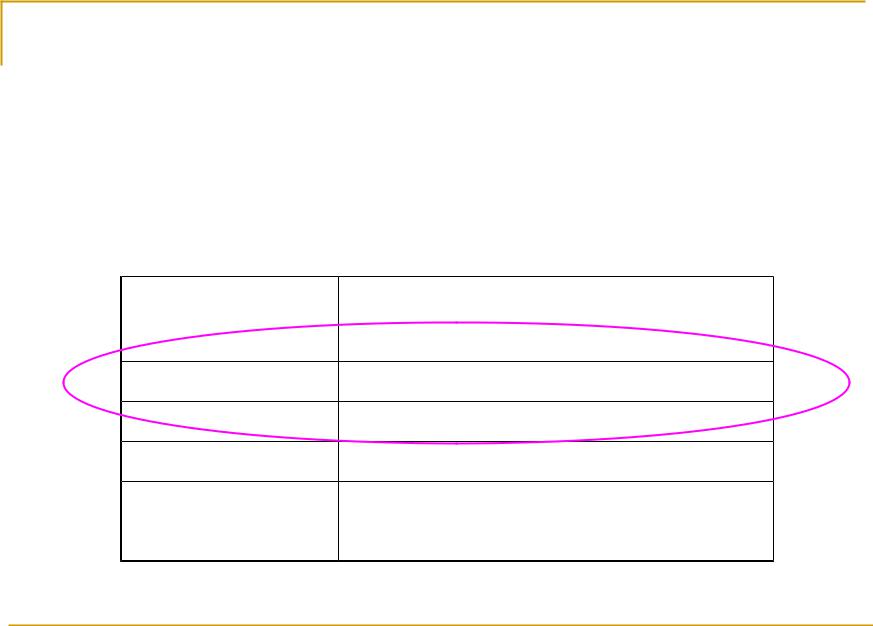
SR absorption
The main gases absorbing S radiation are
Ozone
Absorption bands |
Volume coefficient of |
Rang of the spectrum |
|
absorption, 1/cm |
|
0,22 – 0,29 |
126,5 |
UV |
0,31 – 0,36 |
0,79 |
UV |
0,44 – 0,75 |
0,0594 |
Visible |
4,75 |
<0,01 |
IR |
9,6 |
<0,01 |
IR |
14,1 |
<0,01 |
Distant IR |
Lecture 3 |
3 |
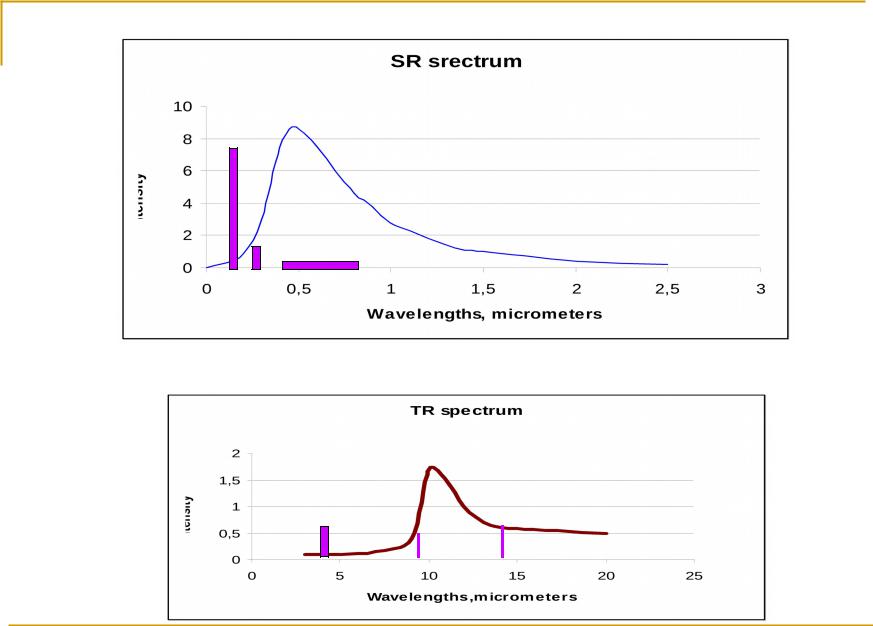
Ozone (O3) absorbtion
Lecture 3 |
4 |
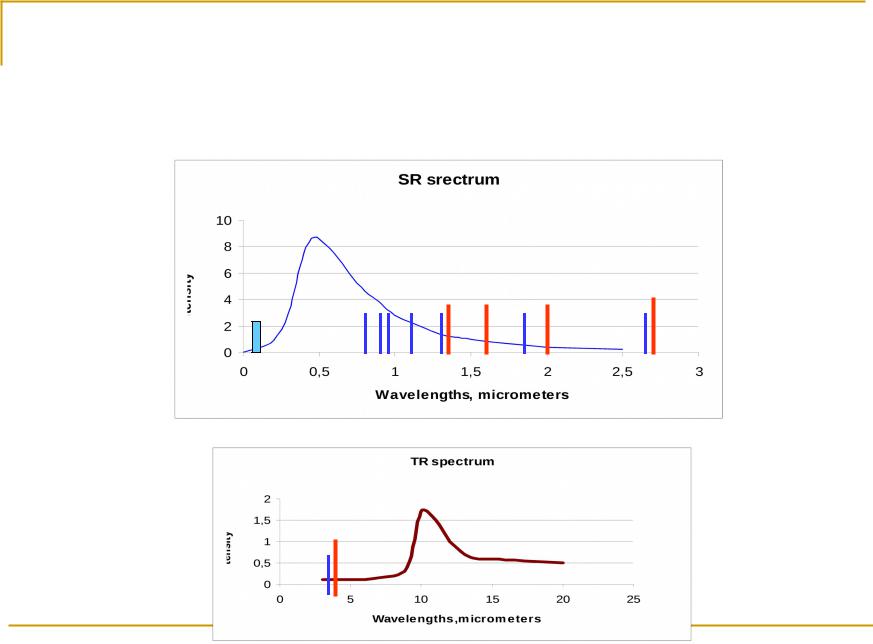
Oxygen |
|
Water vapor |
Carbon dioxide |
||
|
|
|
|
|
|
|
|
0,72; 0,84; 0,94; 1,14; 1,38; |
|
1,44; 1,6; 2,02; 2,7; |
|
0,13 – 0,24 |
|||||
|
1,87; 2,7; 3,2 |
|
4,31; |
||
|
|
|
|||
|
|||||
Lecture 3 |
5 |
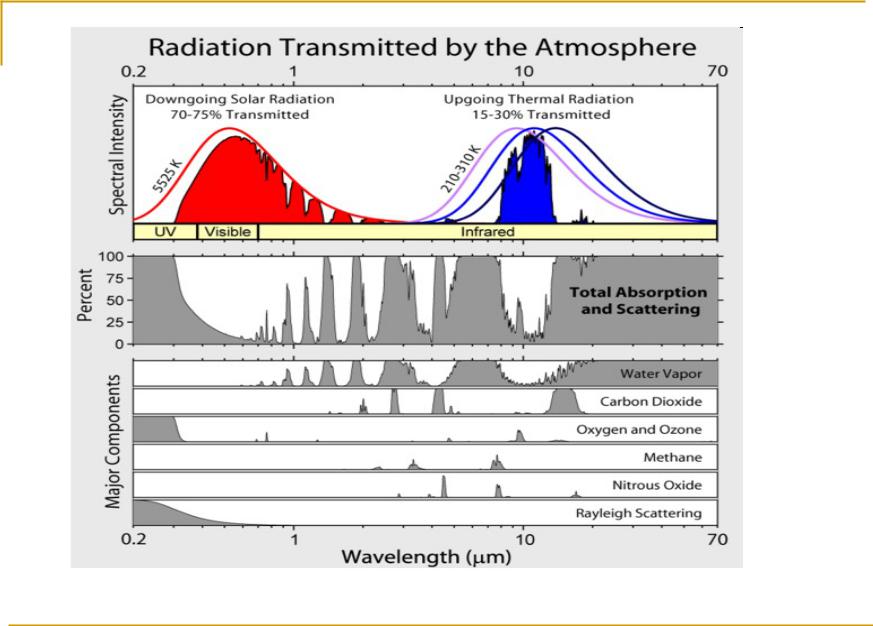
http://en.wikipedia.org/wiki/File:Atmospheric_Transmission.png
Lecture 3 |
6 |
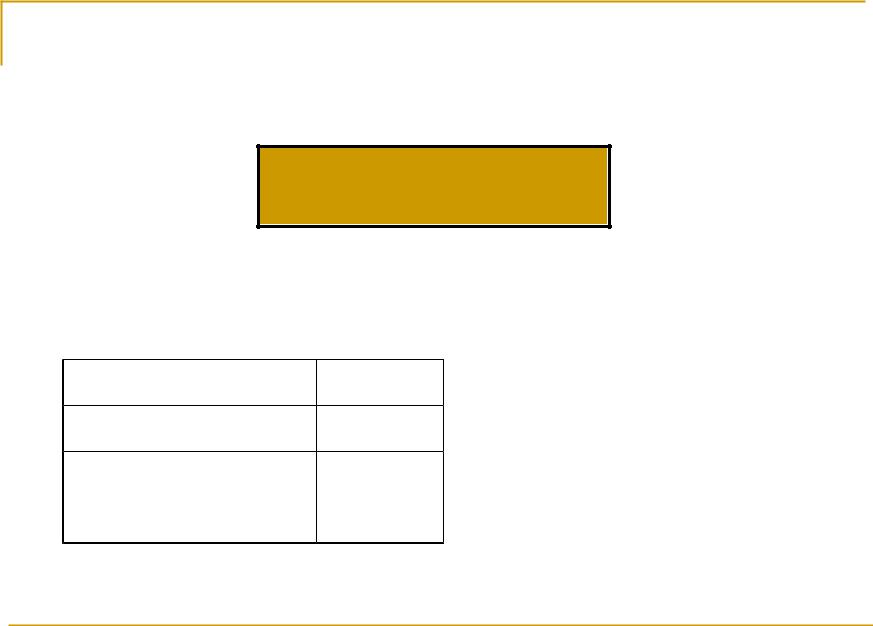
Water vapor transmission function
3
P Qv bi exp i Qv
i 1
Qv is the mass of water vapor in a column of air with the base 1 m2 bi and βi are quantities empirically obtained.
i |
b |
β |
1 |
0,077 |
5,83 |
2 |
0,145 |
0,145 |
3 |
0,778 |
0,002 |
Mass of the water vapor in the atmosphere is larger than that of ozone and carbon dioxide. Hence, it absorbs the larger part of the total absorbed radiation.
Nitrogen does not absorb radiation. Solid aerosols also absorb SR. In the layer 0,3 – 8,4 km O2 and CO2 absorb 3,8% and solid aerosols
absorb 4,8% of SR.
7

SR diffusion in the atmosphere
Terminology
Diffusion (произвольное рассеяние)
Scattering (Разбрасывание в разных направлениях любых веществ,
предметов и даже людей)
Dispersion (синоним Scattering, в науке применяется к свету)
Turbidity (мутность).
The atmosphere is turbid medium due to many admixtures (aerosols) suspended in the air.
Aerosols scatter and absorb solar and terrestrial radiation.
Lecture 3 |
8 |
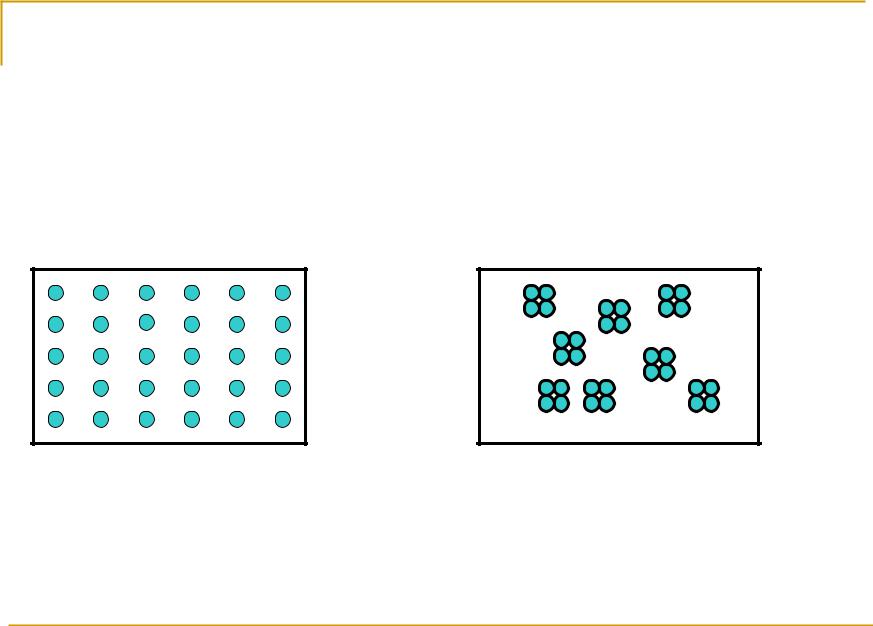
Molecular scattering or Rayleigh scattering
The atmosphere is turbid medium diffusing SR even in the absence of aerosols. In this case turbidity is molecular complexes.
The essence of the scattering is a particular form of interaction between variable field of coming electromagnetic waves and particles in the medium. Due to this kind of interaction the particles become sources of new electromagnetic waves.
Lecture 3 |
9 |

John William Strutt, third Baron Rayleigh
1842 - 1919
"Lord Rayleigh - Biography". Nobelprize.org. 22 Sep 2010 http://nobelprize.org/nobel_prizes/physics/laureates/1904/strutt-bio.html
Lecture 3 |
10 |
